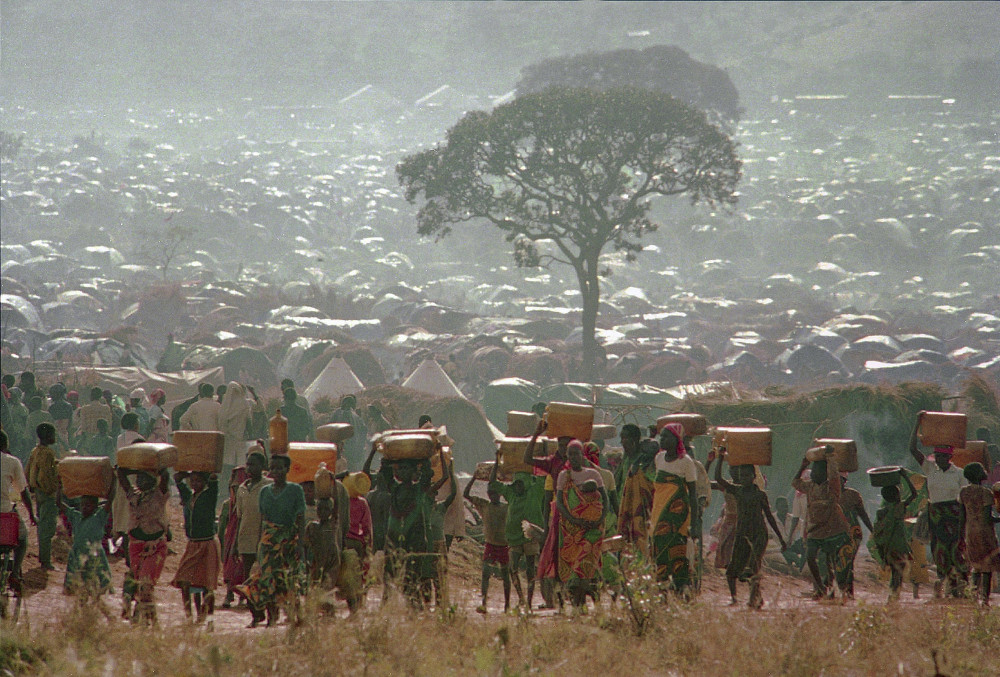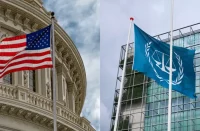Part I
The identities and origin
Rwandan history is not only tied to shortage of land, population pressure, and a legacy of institutionalized inequality, but also genocidal feuds between the Hutu majority and the Tutsi minority. The very concept of a Rwandan nation is, in fact, very contested. Two opposing views have surfaced in the aftermath of the 1994 Rwandan genocide:
- One thesis holds that the Twa, the Hutu, and the Tutsi are the same people with a common historical origin, language, clan structure, religion, and at least in important respects culture.
- The contrary view contends that these three are distinct ethnic – even racial – groups that migrated as separate races into contemporary Rwanda.
These two different approaches are supported by rival Tutsi and Hutu intellectuals. However, in reality, the Hutu/Tutsi identities operated more like castes based on social stratification but not as real ethnic groups. A wealthy Hutu could become a Tutsi through a process called “Kwihutura” and, it was rare, a Tutsi who lost wealth could fall to Hutu social status (“Gucupira”). These identities were rigidified under colonial rule, which started in the 1890s and coincided with succession disputes and Hutu uprisings that followed the death of Mwami Rwabugiri (1860−1895). Colonialism was resisted, most fiercely through the Nyabingi cult, which was not defeated until 1928.
Colonialism in Rwanda and Hutu-Tutsi relations
Under West European colonial rule in Rwanda, Tutsi power increased. German and after WWI Belgian rule erased existing Hutu-Tutsi reciprocal relations. Hutu chiefs have been replaced with Tutsi chiefs, and the Tutsi were given a monopoly over administration and education. A two-tier education system, established in the 1930s, prepared the Tutsis for political-administrative leadership and the Hutus for labor and the priesthood. A forced labor system was codified in 1924 which demanded that the Hutus provide labor for 142 days annually, and carry a card specifying their ethnic (in fact social) identity. In practice, in colonial Rwanda, the Hutus have been overtaxed, starved, and embittered which led to the first Hutu rebellion in 1910. The massacre of Tutsis by Hutus in Rwanda in 1994 was partly related to the economic advantage historically enjoyed by the Tutsis and fostered by the West European colonial powers.
In the 1950s Belgium capitulated to demands from the OUN for the creation of elected advisory structures. The Belgian colonial authorities became suspicious of the militant nationalist and Pan-African supporters by the Tutsi feudal elite and, therefore, replaced Tutsi tribal chiefs with Hutu chiefs and started to back Hutu political aspirations. At the same time, the Catholic Church described the Tutsi-Hutu inequalities as incompatible with Christian morality. In 1957 a small Hutu Roman Catholic elite produced the “Hutu Manifesto” which called for an end to Tutsi economic and political dominations over the Hutus. However, the Tutsi took a reactionary attitude in defense of their privileges and intra-ethnic supremacy and superiority.
In July 1959, after the death without heir of Mwami Matara III, the Belgians decided to establish a republic. In defiance of the Belgian Resident-General, the Tutsi feudal aristocracy enthroned Mwami Kigeri, Matara’s half-brother, and intimidated and killed Hutu leaders. The ensuing Hutu-Tutsi struggle forced Mwami Kigeri to flee the country and made some 22.000 Tutsis into internal refugees.
 Fighting between the supporters of the new Party of the Movement for Hutu Emancipation (PARMEHUTU) and the pro-Tutsi National Rwandese Union (the UNRA) married elections for local assembles in October 1960. The Hutu gained control of the provisional Government, led by Grégoire Kayibanda as PM. PARMEHUTU party won another overwhelming majority in the second round of voting. In July 1962 Kayibanda became president of a new Republic of Rwanda. That was the end of the West European colonial power in this East African country.
Fighting between the supporters of the new Party of the Movement for Hutu Emancipation (PARMEHUTU) and the pro-Tutsi National Rwandese Union (the UNRA) married elections for local assembles in October 1960. The Hutu gained control of the provisional Government, led by Grégoire Kayibanda as PM. PARMEHUTU party won another overwhelming majority in the second round of voting. In July 1962 Kayibanda became president of a new Republic of Rwanda. That was the end of the West European colonial power in this East African country.
The fastest genocide in the 20th century
The 20th century witnessed the emergence of organized genocide and carries the dubious distinction of being the most genocidal century in history. In the Armenian genocide of 1915−1916, around 1.5 million Armenians died followed by the Greeks and Assyrians in the Ottoman Empire by the Ottoman Turks and Kurds. The Nazi German Holocaust resulted in the death of some 6 million Jews (according to the Jewish sources) and remains the most horrific example of the planned extermination of one ethnic group by another at least according to the Western writings. However, at the same time in the Far East of Asia-Pacific, the Japanese soldiers exterminated around 16 million Chinese people from 1936 till 1945. At the end of the century, in 1995, the ethnic Hutu majority in Rwanda launched a genocidal campaign against the ethnic Tutsi minority, claiming the lives of at least 800.000 up to 1 million individuals within a time span of three months. The genocide was followed by more than two million Rwandan refugees spilled over into neighboring states, fostering intra-ethnic tensions in Burundi and Zaire.
After the proclamation of independence of Rwanda in 1962, Tutsi supremacists in exile created guerrilla militias (“cock-roaches”), which repeatedly infiltrated Rwanda. In December 1963, 10.000 Tutsis have been massacred in retaliatory attacks. In 1964 the number of Tutsi refugees was 150.000. The killing of Hutus by Tutsi soldiers in Burundi in 1972 created strong anti-Tutsi feelings among Hutus in Rwanda. In the mayhem that ensued in 1973, a moderate Hutu General Juvénal Habyarimana overthrow Kayibanda. A new president banned PARMEHUTU, discouraged ethnic politics, and emphasized the economic development of Rwanda. However, on other hand, he prevented the return from exile of the Tutsis under the argument that the country could not support them because of an acute shortage of land and limited opportunities for jobs. Nevertheless, his Government terrorized Rwandan Tutsis in different ways, imprisoned some 8.000 Tutsis without any trial, and subjected more than 1.000 to summary execution.
Poverty, indebtedness, unemployment, and mismanagement exacerbated the economic-political crisis in Rwanda. Over-reliance on coffee and tea precipitated a food crisis and made Rwanda vulnerable to the vagaries of global commodity markets. In 1990, the cost of health and education was creating mass poverty due to sharply rising debts and the imposition of structural adjustment programs. In an ethnicity-defined political and social order, the Tutsi minority bore the brunt of these economic woes and retrenchment policies.
To add to all other regional problems in the early 1990s, the Tutsi refugees from Rwanda located in the US-backed Uganda created political-military the Rwandan Patriotic Front (the RPF). Soon, its military wing started to make repeated incursions into North Rwanda during the time of the civil war from 1990 till 1993. This devastated the Rwandan economy, undermining food and coffee production, as well as the Rwandan tourist industry. The Government increased spending on the military at the expense of both health provision, and food production. The Hutus have been afraid that Tutsis (called “cock-roaches”) because of their night attacks across the border with the intent of seizing power in Rwanda and taking back the land that had been given to Hutus. Underlying the RPF insurgency was the question of the citizenship, return, and security of over 2 million refugees. Nevertheless, the military attacks by the Tutsi RPF served as a very convenient pretext for the Hutus to arrest, persecute, and kill domestic Tutsis. The Arusha Peace Accords of August 1993 created conditions for a ceasefire between the RPF, which occupied North Rwanda, and the Hutu Government in Kigali. The accords as well called for a transitional phase of Hutu-Tutsi power-sharing until an election could be held, offered security to refugees and returning Tutsis, and promised new elections by 1995. Finally, the Arusha Peace Accords created an OUN peacekeeping force (the UNAMIR), which was commanded by the Canadian General Roméo Dallaire, to be deployed in Rwanda. However, such situation development mobilized the Hutu extremists critical of the long-time moderate Hutu President Juvénal Habyarimana to demand that their privileges be protected against potential Tutsi military advances. The Hutu extremists led by Hutu intelligentsia, who opposed accommodation with the Tutsis and democratization of the political system of Rwanda, assassinated President Juvénal Habyarimana that opened the doors to a genocidal campaign.
At the same time as the attacks by the Tutsi RPF, the radical youth wing of the political party of the Rwandan President Juvénal Habyarimana created militia groups trained by the Rwandan police and army. These groups have been called “those who attack together” and ended up playing a focal role in the coming Rwandan genocide in 1994. Some of these Hutu militia groups collected names of Tutsi for the sake to be exterminated in the case of conflict. The growing nationalism and extremism of the movement of Hutu Power and the anti-Tutsi radical propaganda of the important Hutu extremist radio station surely contributed to the deterioration of the Hutu-Tutsi relations after the 1993 Arusha peace accords.
Canadian General Dallaire was worried about the Hutu conspiracy that the Hutu militia will kill Belgian soldiers and parliamentary deputies. The UN peacekeepers discovered an arms cache and on January 11th, 1994, he faxed his superiors at the UN asking permission to confiscate the arms but they denied his request. He as well had information from a Hutu informant that the Hutu militia is trained to exterminate up to 1.000 Tutsis per 20 minutes. That was exactly the state of Rwanda when, on April 6th, 1994, the airplane carrying Rwandan and Burundian presidents back from peace talks in Dar es Salaam was shot down over Kigali airport. Regardless of the fact that it was unclear by whom the plane was shot down, the Hutus immediately accused the Tutsis of this crime and the conflict started.
The bloodiest conflict in the modern history of Africa started with the genocide of ethnic Tutsis in Rwanda in 1994 by ethnic Hutus. Historically, for centuries, Tutsi kings in Rwanda and neighboring Burundi had imposed a feudal system in which Hutus have been serfs (i.e., economically exploited). Both German and Belgian colonial rulers in the region had supported Tutsi domination. Three years before the Rwandan independence in 1962, ethnic violence erupted when elections led to Hutu-dominated authorities. Thereafter, periodic clashes of tribal violence continued in both Rwanda and Burundi. In 1990, the Tutsi-dominated RPF began an effort to overthrow the Hutu Government from their bases in Uganda.
A conspiracy of Hutu military leaders, as a consequence of the Tutsi policy, evolved to physically exterminate the Tutsis, and the genocide started in April 1994 after a plane carrying the presidents of Rwanda and Burundi was shot down near Rwanda’s capital – Kigali. According to militant Hutu propaganda, Rwandan President Habyarimana was killed by the Tutsis. The fact was that almost immediately after the announcement that the Rwandan President (Hutu) was killed, the Presidential Guard, under the orders of the improvised Hutu Power interim authority led by Colonel Théoneste Bagosora, started the execution of significant and influential Tutsi politicians and of Hutu known to be sympathetic to a coalition of the Hutu-Tutsi Government. Ministers from the coalition Government have been among the first to be killed, including the PM, the president of the Supreme Court, and almost all the leaders of the Social Democratic Party. Rwandan army soldiers, just as predicted by the Canadian General Dallaire’s message to his superiors, executed ten Belgian OUN peacekeepers and, therefore, prompted the withdrawal of Belgian contingent in the UNAMIR, effectively undermining the OUN’s real military potential for preventing both the conflict and genocide. In the murderous weeks that followed, up to one million Tutsis have been executed, often by machete-wielding Hutu neighbors, many of whom were forced against their will by militants to participate in the killings. Roadblocks were set up in the regions controlled by the interim Government, manned by Rwandan army personnel and militia members. Tutsis were either exterminated on the spot or arrested and placed in detention camps. Lists of the Tutsis and moderate Hutus circulated within the militias, who hunted them down and killed them. However, after the experience of Somalia in 1992, the USA and other Western states, although aware of the genocide that was taking place on the ground, were unwilling to intervene.
For sure, the impact of the debacle in Somalia should not be underestimated as the subsequent inaction on the part of the OUN and the international community during the civil war in Rwanda was as claimed by many Westerners largely due to the recent experience in Somalia. The Hutu militants called on Hutu patriots to kill their Tutsi enemies. The killing of Tutsi men, women, and children of all ages was vicious and thorough. Hutus have been beaten and harassed by their radical compatriots if they refused to participate in the genocide. Those Hutus who tried to calm the perpetrators have been as well as terrorized. Hutus who hid Tutsi friends from the Hutu militia groups were also harassed and frequently liquidated but in some cases after being forced to personally kill their Tutsi friends, neighbors, or relatives. The perpetrators looted after the killing and stealing of Tutsi property, burning down their houses for the purpose that they would not return (the same was done in August 1995 during the Croatian operation of ethnic cleansing of the Serb civilians from the territory of the so-called Republic of Serbian Krayina).
The rape and sexual slavery of Tutsi women and girls have been frequently followed by the killing. According to the witnesses, Women have been tortured and horribly abused before being executed. The raping was very systematic and widespread that the ICTR included it in the genocide indictment, not just in the indictment for crimes against humanity, which formally includes rape, torture, forced deportation, and other similar transgressions.
In the course of three months in 1994 (between April 6th, when the president’s plane crashed, and July 18th, when the Tutsi RPF created the interim Government and took control of Rwanda), the Hutu Government of Rwanda and its army composed of many extremists succeeded in exterminating 2/3 of the Tutsi minority in Rwanda. The Hutu warriors have been using firearms, machetes, and different garden implements in the process of mass killing (genocide) of the Tutsis. As a consequence, Hutu militiamen, army soldiers, and ordinary citizens killed around 800.000−up to one million Tutsis and politically moderate Hutu. As many as 50.000 of those killed in Rwanda were Hutus. If the RPF had not intervened, no Tutsi would likely have escaped the genocide program of the Rwandan Hutu Government.
It is claimed to be the fastest and most efficient killing procedure and mass-murdering (genocide) of the 20th century. At the same time, however, the Assistance Mission for Rwanda (the UNAMIR) was largely impotent to stop the genocide. A request by the OUN for up to 5.000 troops was finally approved at the end of May 1994, but in the face of uncertainty over the right to use force, many of the OUN member states delayed contributing troops. By the time UNAMIR reached full strength the Rwandan genocide was already over. Given the scale of the killings, and UNAMIR’s very limited mandate and inadequate resources the OUN peacekeeping mission in Rwanda is deemed to have been a major failure.
To be continued














So you repeat the mainstream narrative that in a so-called genocide of Tutsis by Hutus, the Hutu president gets killed, the Hutu prime minister gets killed, a Tutsi force invades the country, and an anglophile Tutsi becomes president. It just doesn’t add up. How do you buy this nonsense? Would you believe in the Holocaust if Hitler and Himmler would have been killed, the country invaded by Jewish militants, and the leadership taken by a Jewish German president?
Please educate yourself:
https://www.unz.com/article/hotel-propaganda/
@ SZ
What is wrong with “mainstream narrative” if it is correct and as such confirmed after deep investigation?
By 1994 the total population of Rwanda was less than 6M. The number of Tutsis was less than 600K. The official narrative claims that around half a million Tutsis were killed in the so-called genocide. Yet the Tutsis (of whom allegedly only 100K should have survived) emerged victorious against more than 5M machete wielding murderous Hutus, and an anglophile Tutsi became president in a francophone country, and still is in that position. It just doesn’t add up. The official narrative is mathematically and logically impossible. Fact is, during the alleged genocide of the Tutsi by the Hutu, the entire Hutu leadership including the president and the female prime minister were killed, the CIA-backed Tutsi front won the war, and their head became the leader of the country. If there ever was a genocide, it was that of the hapless Hutu elite. The mainstream narrative is impossible to believe in.
I hate war. Damn the war
@ SZ
Still it is not clear what is for you “official narrative”? Second, who is saying that I am using this narrative but not other independent academic narratives saying the same? Finally, in principle, there is no any academic logic not to trust to official mainstream narrative if it is correct and prove to be as such.